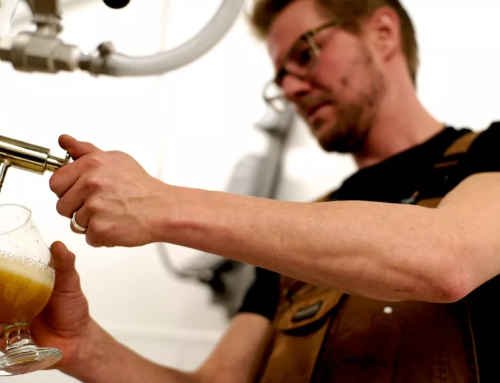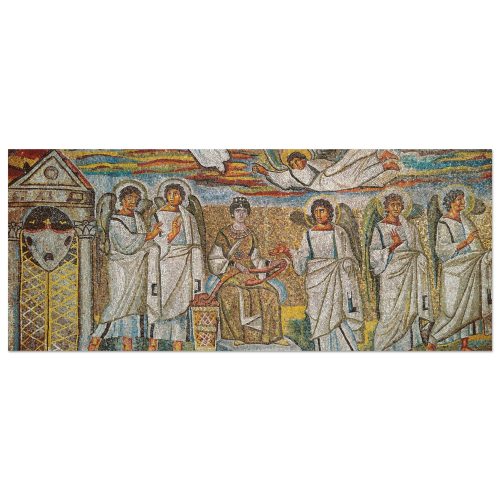Leech Therapy
Leech therapy is a special drainage procedure, such as bloodletting or blood cupping, also known as Hacamat or Hijama.
Drainage procedures are based on the removal of stored waste and other harmful substances through the bloodstream.
What distinguishes leech therapy from all other drainage methods is the unique effect of the leech's salivary secretion, which is released into the patient's bloodstream when the leech sucks.
Because of its effectiveness and tolerability, leech therapy is becoming increasingly popular for a wide range of diseases.
History of leech therapy

Leeching as a method of purification.
Historical records show that leeching was used as a naturopathic and Ayurvedic treatment in India about 3000 years ago.
In the course of history, leech therapy also found its way to Europe, so that in the Middle Ages a large number of leech treatments were carried out in different European countries.
At that time, leeching fell into dispute due to many arbitrary applications, as the initial health condition of many patients was not taken into account due to the lack of scientific knowledge.
In recent years, however, leech therapy has been used more and more frequently and is experiencing a real renaissance.
In addition to its use as a drainage method, leeching is sometimes also used as a complementary treatment method in conventional medicine.
Areas of application
Leech therapy can be used for a variety of diseases.
The main areas of application are venous congestion, varicose veins (varicosis) and superficial phlebitis (thrombophlebitis).
Leech therapy has proven to be effective for the following diseases:
Venous diseases such as varicose veins, varicosities, thrombosis, hemorrhoids.
Cardiovascular diseases
- Joint diseases such as osteoarthritis, arthritis, rheumatism, gout
- Chronic neck, shoulder and back problems
- Liver congestion, lymphatic congestion
- Hematoma
- Migraine
Especially in the case of osteoarthritis, leech therapy is excellent for relieving pain and reducing swelling due to the decongesting effect.

Often the discomfort caused by osteoarthritis is significantly reduced after the first leech therapy.
In general, leech therapy is extremely useful for all diseases caused by circulatory disorders or inflammatory processes.
MODE OF ACTION OF LEECH THERAPY
Leech therapy is based on the active substances contained in the saliva of these small animals.
Scientists have discovered more than 20 different substances.
In particular, the substances "eglin" (a powerful anti-inflammatory) and "hirudin" (an anticoagulant, which is mainly responsible for blood thinning) have proven to be particularly useful and have been the subject of intensive research.
The active ingredient eglin blocks the enzymes that trigger inflammation and thus opposes inflammatory processes.
Therefore, eglin serves as a natural anti-inflammatory.
In addition, rosehip has an analgesic effect.
The active ingredient, hirudin, has a number of positive properties:
By inhibiting blood clotting, hirudin prevents the formation of thrombosis and helps dissolve existing thrombi.
In addition, hirudin has a vasospasm-relieving effect, which has a decongestant effect.
Hirudin also strengthens the body's immune system by promoting the formation of white blood cells (leukocytes).
White blood cells are the cellular components of the human immune system.
Because hirudin also speeds up lymph flow, the body can remove harmful substances from the lymph more quickly during the elimination process.
Procedure for leech treatment
Because medicinal leeches are very sensitive animals and sensitive to odors, the corresponding skin area should not be washed with soap or cream for about three days prior to treatment.
At the beginning of the leech therapy, the medical leech is placed on the selected skin area with tweezers or a syringe-like tube.
In order for the leech to be active in the desired area, the therapist holds it in position with an inverted glass.
The leech then begins its work by penetrating the skin with its tiny teeth.
Since the leech immediately releases an anaesthetic secretion, the procedure is barely noticeable and can be compared to a mosquito bite.
The leeching treatment takes between 30 and 90 minutes.
During this time, a leech absorbs 10 to 20 ml of blood, depending on its size, and two to six animals are usually used.
For this reason, leech therapy is sometimes called "mini phlebotomy".
Once a leech has sucked enough blood, it falls off by itself.
It is important that the leech not be forcibly removed under any circumstances, as parts of the jaw may remain in the wound, which can lead to inflammation.

Subsequent bleeding from the wound is desirable and should not be prevented under any circumstances.
This increases the effectiveness of the leech treatment and frees the wound of any germs.
At the end of the treatment, the wound is dressed with a sterile, loose bandage.
The bleeding that follows usually lasts no longer than 12 hours.
Side effects of leech therapy
During leech therapy, side effects often occur, but they are usually completely harmless.
These include bruising around the bite site, which completely disappears within a few days.
It is also normal for redness, itching and slight swelling to occur up to 48 hours after treatment.
Itching should not be indulged at all to avoid infection of the wound.
Although the bite site usually heals completely within a few weeks and is no longer visible, elderly people or patients with more extensive scarring may develop a small permanent scar.
In addition, some patients suffer from poor circulation after treatment.
It is therefore recommended to spend the day of the treatment in a quiet environment and to drink plenty of fluids.
Other rare to very rare side effects of leech therapy are:
- Prolonged secondary bleeding
- Delayed wound healing
- Decreased blood pressure
- Allergic reactions
- Local inflammation
- Infections
Who is leech therapy suitable for?
Although leech therapy is suitable in principle for everyone and for animals, the treatment should not be used in certain life circumstances and in cases of existing diseases.
These include taking anticoagulant medications such as Marcumar, a weakened immune system, anemia, excessive scarring or pregnancy.
Always seek the advice of your doctor, specialist or veterinarian!
by Andrea Burgdorf
Holistic Medicine and Naturopathy
To follow the training click here










Hi,
I own a dog farm, do you think leeches can improve their quality of life?
Hi Margaret,
We could confirm that leeches and dogs are friends for alot of deseases and for sure wellness!
Please take a moment and consider our online course here https://pretasurvivre.com/product/equine-hirudotherapy-training/